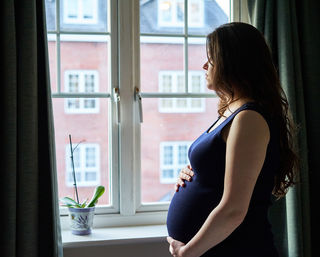Pregnancy
Pregnant Women Face Unique Challenges in the Opioid Crisis
Expectant moms may fear seeking treatment for opioid use disorder.
Posted September 23, 2019 Reviewed by Lybi Ma

By Kieran McLean
Pregnant women occupy a troubling—and perhaps overlooked—corner of the opioid epidemic.
The amount of women affected has skyrocketed: Opioid use disorder among new mothers in the U.S. quadrupled between 1999 and 2014, according to the CDC. There is evidence that women are already less likely than men to enter treatment for substance use disorders. But pregnant women also face the burden of needing to seek treatment while avoiding pointed stigma and potential repercussions related to their substance use—which may lead them to avoid comprehensive medical care.
“Pregnant women are just viewed differently,” says Stephen Patrick, an associate professor of pediatrics and health policy at Vanderbilt University. “They’re filled with fear about seeking treatment, often due to fears about family services taking away their child.”
In a 2015 study, researchers interviewed 30 recently pregnant women who had used alcohol or other drugs during pregnancy. Twenty-two of the women disclosed that they were afraid to be identified as a substance user during the pregnancy. Among their fears were testing positive for the substance at prenatal appointments or after delivery, losing custody of their children, and facing criminal charges for their substance use. Some indicated that they strategically timed or skipped appointments or avoided them altogether as a result.
The use of opioids while pregnant can harm a newborn’s health. The child may be born with neonatal abstinence syndrome (NAS), in which the infant experiences symptoms of withdrawal. A study by Patrick and colleagues found that areas of the U.S. with the highest rates of NAS in 2012, the East South Central region and New England, contained states that had some of the highest rates of opioid prescriptions.
“Between 2011 and 2017, the increase in babies born with substance use disorders was in lockstep with the opioid crisis,” Patrick says.
Stigma and barriers to treatment may be especially high for black women, according to social worker Erica Upshaw-Givner, who works as a treatment clinician outside of Pittsburgh. Black clients frequently don’t know that they can receive treatment for opioid use disorders by checking the “Drug Use” box on their Medicaid applications, according to Upshaw-Givner. “They’re either ashamed or scared that something’s going to happen,” she says. “I have to tell them, ‘Use these resources!’”
The solution to these problems starts with changing how state and federal opioid treatment programs are implemented, according to Patrick. For example, changes made to the Family First Prevention Services Act in 2018 allow states to use federal money to keep some parents and children together rather than separating them. Providing lactation consultants and child specialists and scaling up in-home nurse visitations after a child’s birth are other potential improvements.
“Pregnant women need a vast expansion of treatment, particularly in rural communities,” Patrick says. “Research suggests that keeping the mother with her child is ultimately beneficial. We want a special focus on the fourth trimester—when they leave the hospital with their newborn.”
Kieran McLean is a former Psychology Today Editorial Intern.


